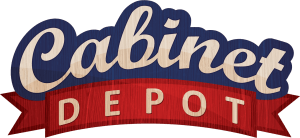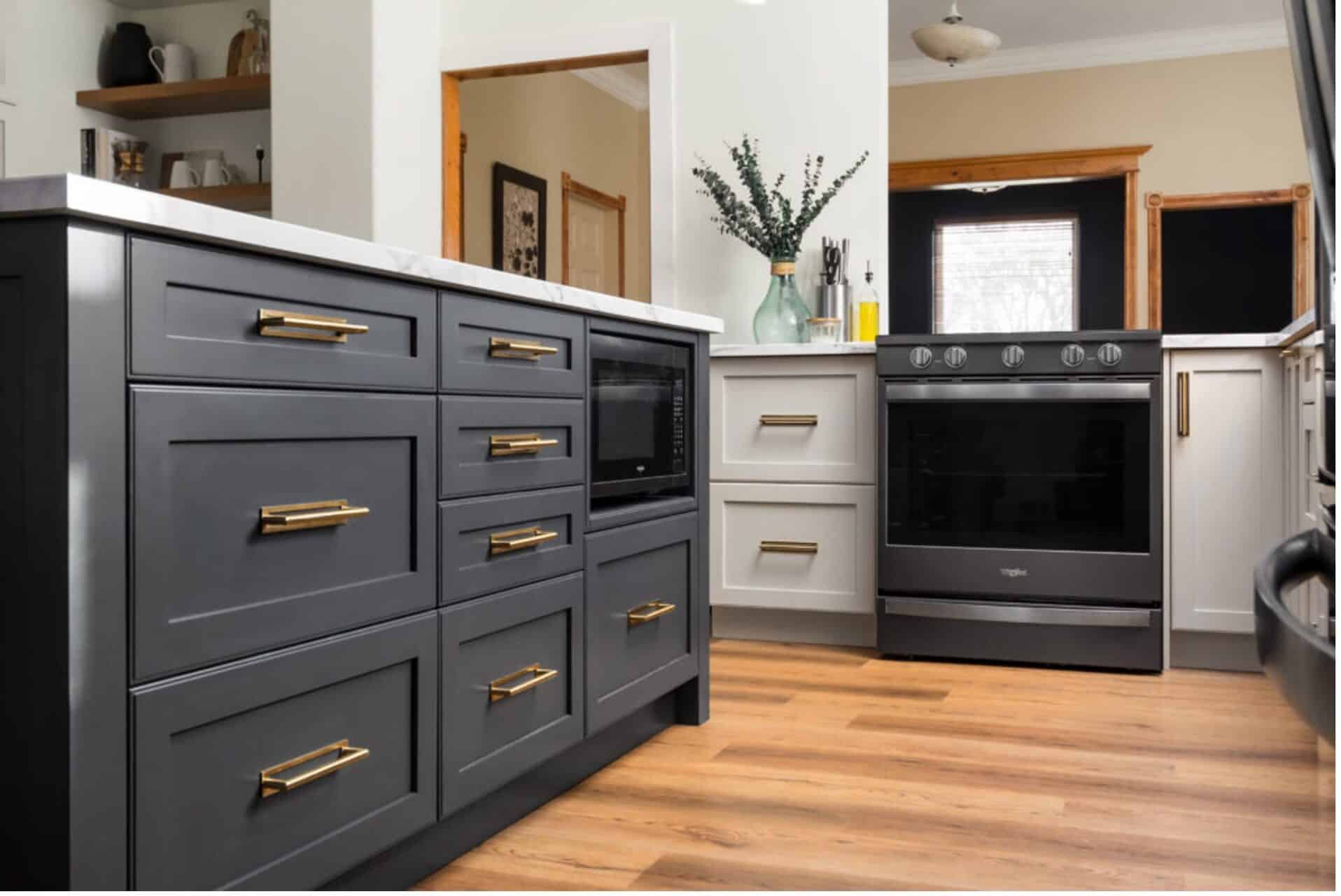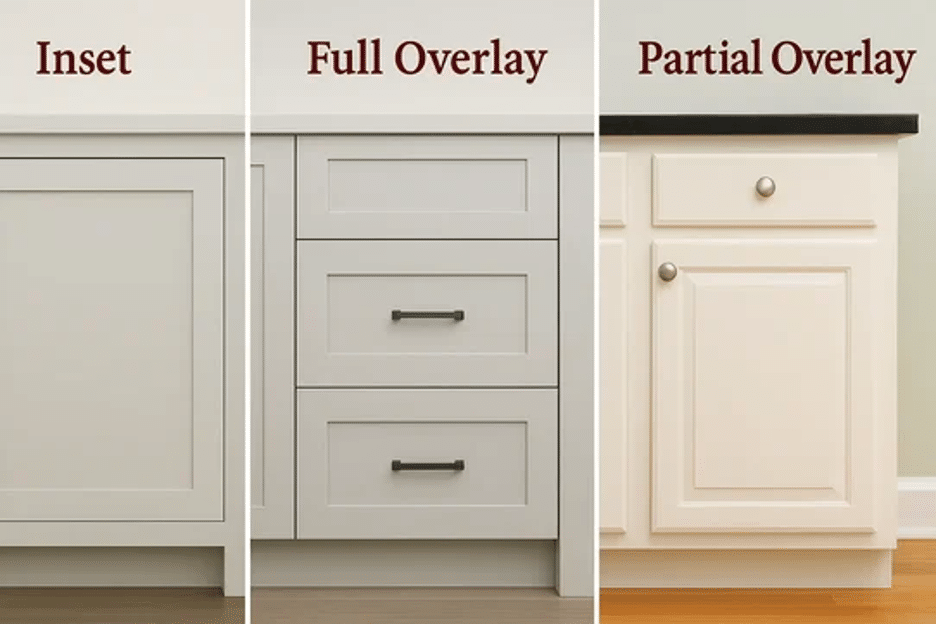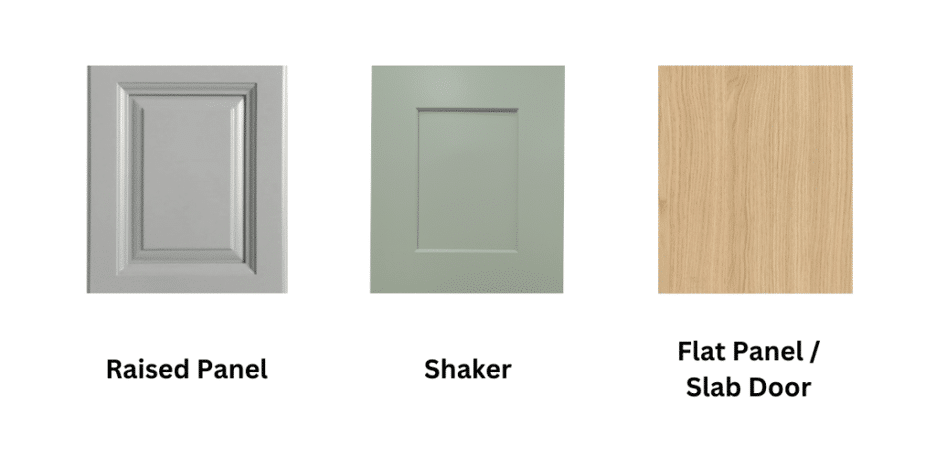When you start planning a kitchen or bathroom remodel, the world of cabinetry can feel overwhelming. Contractors, designers, and sales teams often use terms that may not be familiar to homeowners. Understanding cabinetry terminology makes it easier to communicate your vision, compare options, and make confident decisions about your remodel.
In this guide, we’ll break down the most common cabinetry terms you’ll encounter so you can walk into Cabinet Depot—or any showroom—feeling prepared.
Base Cabinets
Base cabinets are the foundation of most kitchens and bathrooms. They sit on the floor, provide storage, and support countertops. Typical base-cabinet depth is around 24 inches, with a finished countertop height near 36 inches. You can customize interiors for drawers, shelves, or pull-outs based on how you cook and store items.
Wall Cabinets
Wall cabinets (also called uppers) are mounted above the countertop and keep everyday items within easy reach. They come in multiple heights and depths to fit different ceiling lines and layouts, from traditional runs to modern, open designs with glass or floating shelves.
Face Frame vs. Frameless
One of the most important distinctions in cabinetry is whether the cabinet box has a face frame.
- Face Frame (Framed) Cabinets: A wooden frame—made of vertical stiles and horizontal rails—is attached to the front of the box. Doors and drawers mount to this frame, which adds rigidity and gives a classic American look.
- Frameless (Full-Access/European) Cabinets: No face frame; doors and drawers mount directly to the sides of the cabinet box. This yields a sleek, modern appearance and slightly more accessible interior space.
Overlay
The overlay refers to how much the cabinet door covers the face frame (for framed cabinets).
- Partial/Traditional Overlay: Fronts cover part of the frame, leaving more frame visible between doors and drawers—a classic visual rhythm.
- Full Overlay: Fronts are sized to cover most of the frame with minimal reveal, creating a seamless, contemporary look.
- Inset: Doors and drawers sit inside the frame opening, flush with the face frame, for a refined, furniture-style appearance.
Shaker Style
Shaker is a versatile five-piece door with a recessed (flat) center panel and clean lines. It pairs well with both traditional and contemporary designs and works with stained or painted finishes.
Raised Panel vs. Flat Panel
Cabinet doors are often categorized by their center panel design.
- Raised Panel: The center panel is elevated with decorative edges, adding depth and detail.
- Flat Panel: The center panel is recessed and simple, creating a clean, modern appearance.
- Reversed Raised Panel: Built like a traditional raised-panel door but installed with the flat side facing outward. You get the clean look of a flat/recessed panel with the strength and color stability benefits of a solid-wood construction.
Cabinet Box
The cabinet box is the main body of the cabinet. It supports the shelves, drawers, and hardware, and gives the cabinet its strength. While the doors and drawer fronts create the look you see, the box is what keeps everything sturdy and working properly over time.
Drawer Fronts and Drawer Boxes
- Drawer Fronts: The visible panel on the outside of a drawer.
- Drawer Boxes: The interior structure that holds your items. High-quality drawers often feature dovetail joints for added strength and full-extension glides for maximum access.
Toe Kick
The recessed area at the bottom of a base cabinet is called the toe kick (or toe space). It lets you stand closer to the counter edge, improving comfort during tasks like prepping, cooking, and cleaning.
Crown Molding
Crown-molded cabinets include decorative molding applied to the top of wall cabinets to deliver a finished, built-in appearance. This trim adds height, elegance, and a custom look across the entire installation.
End Panels and Fillers
- End Panels: Decorative panels placed on the exposed sides of cabinets for a polished finish.
- Fillers: Narrow strips of wood used to close gaps between cabinets or between cabinets and walls, ensuring a seamless fit.
Why Cabinet Terminology Matters
Knowing these terms isn’t just about learning the lingo—it helps you:
- Communicate clearly with contractors and designers.
- Compare different cabinet styles and construction methods.
- Understand pricing differences between options.
- Make confident choices that fit your budget, style, and lifestyle.
Expert Guidance from Cabinet Depot
At Cabinet Depot, our team believes in making the remodeling process as stress-free as possible. By understanding cabinetry basics like base and wall cabinets, overlays, and door styles, you’ll be better equipped to design a kitchen or bathroom that feels like home.
Whether you’re just starting your project or finalizing details, our experts are here to walk you through every step—from choosing the right cabinet construction to selecting the perfect hardware.
Ready to turn your dream kitchen or bathroom into reality? Visit Cabinet Depot today to explore our wide selection of cabinets, countertops, and hardware. Our experienced team will help you find the perfect fit for your home.






